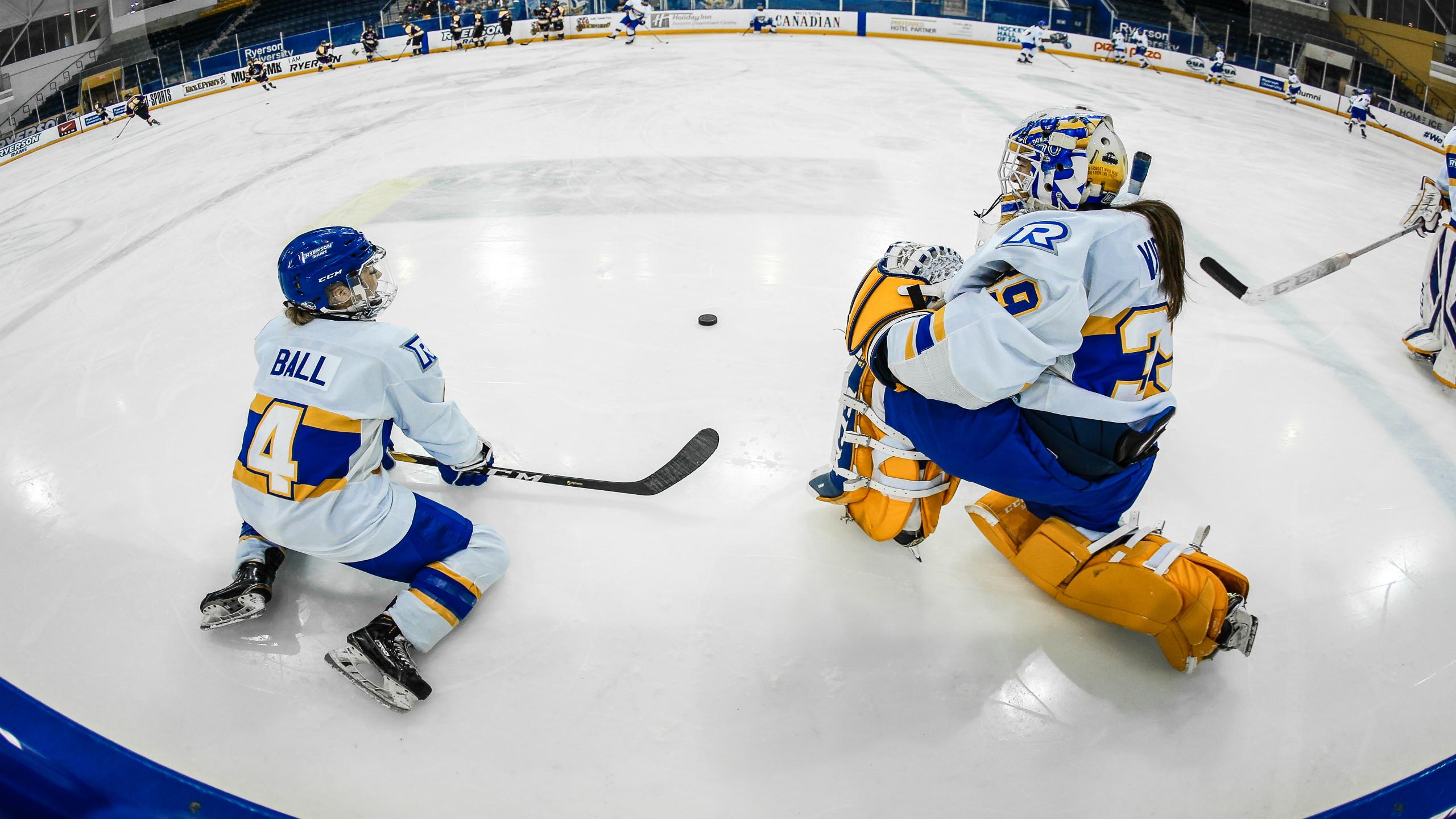By Tom McCabe
It’s no surprise to hear that the life of a student athlete is exhausting.
The mental side of juggling classes, study hall, a social life and possibly a part-time job is often compounded by the physical demands of one’s sport.
Daily practice and workouts, in addition to games and frequent travel, can quickly add wear and tear to the human engine. As many teams’ seasons get into what is often referred to as “the dog days,” stretching and body maintenance become an equal, if not more crucial component of success.
When asked about stretching, a topic often met without much eagerness, many athletes will confess a similar thought.
“I wish I started stretching a lot earlier,” admits Rams fourth-year goalie Taylor Dupuis. In the net, a goalie is pulled a variety of different ways in an instant, therefore being flexible is an unwritten job requirement.
Dupuis continues to explain that he only started taking stretching seriously after his first major injury around the age of 18. Since then, it’s become an integral part of his routine. “Right now I take it more serious than anything,” he says.
It’s a similar fate for many athletes; they’re told to stretch as they progress through the sport. But until they are sidelined, the advice is often put aside.
Adam Simac, a former professional volleyball player, now the assistant coach and strength and conditioning coach for the women’s volleyball team, says that it wasn’t until he was playing for money that he started to dedicate extra time to taking care of his body. Nowadays, he works to instill a commitment to body maintenance in the athletes he works with.
“It’s unrealistic for athletes to think they can just show up and start moving around and that they won’t get hurt,” says the former Team Canada middle blocker. “Being a student-athlete, it’s a different world…you’re always on the go.”
It’s a similar fate for many athletes; they’re told to stretch as they progress through the sport. But until they are sidelined, the advice is often put aside
Simac went through it and understands time is everything at the varsity level. However, he feels there is still room to grow among athletes understanding the importance of properly taking care of their bodies.
“It’s one thing to be told to do something, but when you come to the realization of how important [stretching] is yourself, you’re much more likely to buy in to what you need to do,” he added. “That doesn’t just apply to your body, it can apply to anything in life.”
Perhaps the person who understands this sentiment more than anyone is Jerome Camacho, Ryerson’s head athletic therapist since 2008. Tucked in his clinic in a back corner of the Mattamy Athletic Centre, Camacho and his team treat up to 40 different athletes a week for a wide variety of aches and ailments.
Camacho says each sport has hotspot areas for injury: for basketball it’s the knees and ankles, volleyball is shoulders and knees, hockey is the hips and groin and soccer is a lot of lower back, knees and ankle problems. While each injury will vary in severity, Camacho can usually identify a common theme.
“It usually ties into some flexibility issues,” he says. Stretching properly can both prevent an injury from happening and is one of the key components of an athlete’s rehab. However, Camacho understands that hearing how important stretching is can become repetitive.
“It’s usually the same spiel when they’re sitting at the table,” he explains. “And they’ve heard it before, [so] it’s not new to them.”
While it is Camacho’s job to keep athletes healthy, he says that at the end of the day, it’s a two-way relationship. Athletes need to be responsible and put in the time if they want to stay healthy.
Luckily, the education and awareness around body maintenance has improved since Camacho arrived at Ryerson. He explains that having “Dr. Google” at your fingertips allows instant information on various stretching techniques and routines, in addition to the growing popularity of foam rolling, yoga and ice baths. He also notes the importance of sleep and nutrition as recovery tools, since both areas can quickly get ignored under the stress of a varsity schedule.
Waiting to tweak a hamstring or strain a hip flexor can surely be an unwelcome wake-up call, and lead to hearing the same spiel from Camacho or one of his staff.
While the process can be tedious, it’s clear that athletes, coaches and athletic therapists all agree taking care of one’s body is vital to performing at the varsity level.
Stretching may not look as sexy as a dunk, a goal or a glove save, but they’ll never happen unless the body is prepared and taken care of.











Leave a Reply